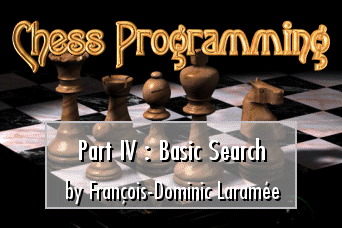11/10 - 11/12 @ Montréal, Canada
12/5 - 12/7 @ Shanghai, China
12/24 - 12/27
2/28 - 3/4 @ San Francisco, CA
More events...
2406 articles in the reference section.
Help us fight cancer!
Join SETI Team GDNet!

|
Ordering Moves to Optimize AlphabetaBut how can we achieve this best case scenario? Do we even need to? Not really. It turns out that Alphabeta is always very efficient at pruning the search tree, as long as it can quickly find a pretty good move to compare others to. This means that it is important to search a good move first; the best case happens when we always look at the best possible moves before any others. In the worst possible case, however, the moves are searched in increasing order of value, so that each one is always better than anything examined before; in this situation, alphabeta can't prune anything and the search degenerates into pure, wasteful Minimax. Ordering the moves before search is therefore very important. Picking moves at random just won't do; we need a "smarter" way to do the job. Unfortunately, if there was an easy way to know what the best move would turn out to be, there would be no need to search in the first place! So we have to make do with a "best guess". Several techniques have been developed to order the possible moves in as close to an optimal sequence as possible:
Having said all that about "reasonable ideas", it turns out that the most effective method is one which goes against every single bit of human intuition: iterative deepening.
|
|
|
|
|